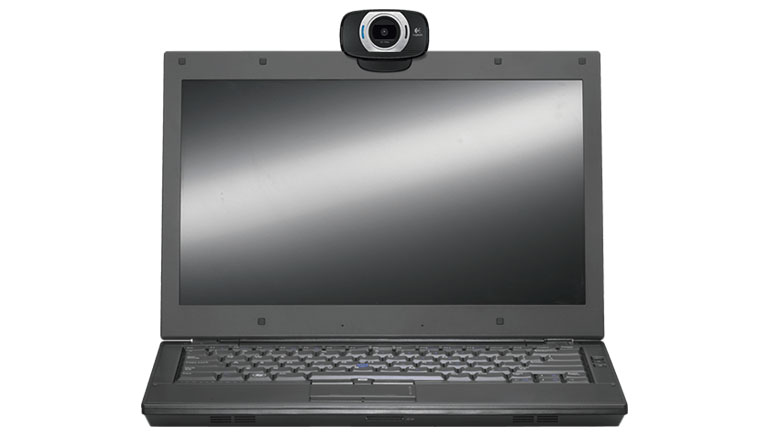
Elements of an Effective Presentation: a Cheat Sheet
I’m guessing that most of you have been inundated with presenting or watching webinars during this time when many face-to-face conferences have been canceled or made virtual. You probably have a few pet peeves about some of the webinars you’ve seen (watching someone’s chin for an hour?).

For many people, giving a live-streamed (or in-person) presentation can be a scary proposition. As opposed to recording a talk that will only be made available on-demand, a live event does not allow you to correct mistakes on the fly. The same guidelines apply for both, but the stakes are higher with a live presentation.
An effective presentation results from 1) preparation and 2) rehearsal. Preparation means being aware of and applying guidelines for giving effective presentations. Rehearsal is important because it reveals pitfalls in your presentation and builds confidence. The more times you give a talk, the more familiar you will become with the content and the more you will be able to focus on the learners.
In this post I won’t be discussing web-conferencing software or troubleshooting tips, although these are important elements of an effective webinar that have been outlined by others. Rather, I will go over what I feel are the “high yield” teaching points in preparing and delivering an effective presentation. Giving and watching hundreds of live talks over the last three decades has revealed to me a number of things that can enhance or derail a presentation.
Disclaimer: I am not perfect. I watch the videos of my own presentations and learn something I can do better from every cringe-worthy moment. I urge you to do the same. It’s like looking at yourself in the mirror, and a mirror can be the best teacher.
One caveat – guidelines are just that. You don’t have to follow them 100%, but the more you do, the better your presentation will be. You shouldn’t have to deviate from the guidelines very often. Be able to justify not following a guideline (e.g., sometimes it just makes sense to have more than 6 words in a line or 6 lines on ONE slide).
In abbreviated format, here are my top ten presentation tips (a more in-depth discussion was recently published):
Pretend that PowerPoint limits the number of characters per slide as Twitter does per tweet.
1. Keep slides simple. Avoid complete sentences and limit the number of words and lines. Force yourself to trim the text. Pretend that PowerPoint limits the number of characters per slide as Twitter does per tweet.
2. Increase the size of the text font. For example, I like a heading font of 54 and the rest of the text to have a font minimum of 40.
3. Keep tables and graphs simple. Think about the learner’s experience. Put yourself in their shoes. You’ve looked at that complicated graph many times and you understand every figure on it. In one minute or less, don’t expect your audience to accomplish the same, no matter how much you try to explain what you’re showing.
4. Use high quality images. Make them big – don’t waste real estate. Blow up small areas that you are trying to highlight. Look at the images on your smartphone and if you can’t see them well, make them bigger. Crop any unnecessary information and DO NOT include any patient information. Adjust the contrast to enhance the features of interest (but not to “create” pathology that isn’t there).
5. Speak clearly and loud enough to be easily heard. Do not mumble. Slow down (yes, it’s possible to speak too slowly, but in my experience, this is very uncommon). Do not cut off the volume of your voice at the ends of sentences (sometimes that’s when the “answer” or teaching point is announced so you want the learner to hear it). Pretend your next salary raise depends on the learner being able to repeat back to you what you said.
6. Vary the pitch of your voice. Speak with enthusiasm. Speaking in a monotone voice is a real communication killer. If you really care about how much your audience is learning, you will focus on how you speak to them. How would you talk to someone while teaching one-on-one at the computer monitor? You would be having a conversation. When you are giving a webinar, think like you’re having a conversation.
7. When showing images, clearly and concisely describe the anatomy and relevant imaging features. When showing more than one image on a slide, orient the audience by making it clear which image you’re referring to before you start describing the image (e.g., “The image at the top left shows…”). Remember, you’ve seen these images many times and you know where the abnormalities are. Allow time for the learner to assimilate the information on each image. Don’t expect the learner to see everything that you do in 30 seconds or less without some help. Be as descriptive as you can (e.g., “This is a coronal reconstructed image of the chest showing numerous 2-mm ground glass nodules in a predominantly upper lung distribution.”). Use an enhanced mouse or other technique to point out relevant findings, but not in lieu of a verbal description. Pretend the learner can’t see the image and describe it with enough detail so that she can picture it in her mind.
8. Avoid reading slides word for word, line by line. Avoid reading slides word for word, line by line.
We learn best when we learn from each other.
9. Engage the audience by incorporating interaction. Possibilities include asking rhetorical questions, showing case-based examples, pausing for directed audience thinking, and use of chat, Q&A, and polling. These are all great mechanisms for getting the audience actively involved. Some of the best teaching moments of a presentation occur when answering a question from the audience. If one person had that question, chances are at least one other person did. One of the basic principles of adult learning is that we (adults) each come to a presentation with a history of different experiences and a unique knowledge bank that we want to share. We learn best when we learn from each other.

10. When possible, share your face with the audience. Yes, I know that means you have to comb your hair and put on a shirt. It’s easier to just avoid having to care about how you look. But allowing the audience to see you will enhance engagement. People prefer watching a real person talking to them rather than a disembodied voice. Keep in mind that you will have to not only pay attention to how you look but also how you act. Many speakers have annoying mannerisms (e.g., tics, facial expressions, overly repetitive hand gestures) that they aren’t aware of. The best way to uncover these distracting behaviors is to watch yourself on video. Adjust your webcam so that you are showing more than just your chin or your eyes. Maintain eye contact with the camera so that you appear to be looking at viewers in the eye. Clean up the remains of last night’s party if they are included in the background. That’s me being facetious. Here’s me being serious: choose a background that will enhance your professional reputation.
There are many more tips for making a great webinar presentation, but 90% of what you need to know is in my top ten. Feel free to send me your recommendations.
It’s worth emphasizing again that the above are guidelines. There is no one recipe for a perfect presentation. That’s where your passion and creativity come into play. Experience and feedback from trusted individuals will make you a better speaker. You will not always hit a home run. If you feel bad when this happens, it means you care about your teaching skills and your audience. If you teach residents and fellows, you serve as a role model, and it’s important that they know that the road to a more perfect presentation is paved by disciplined self-evaluation and making corrections along the way. Finally, optimizing one’s speaking abilities is a life-long process.
